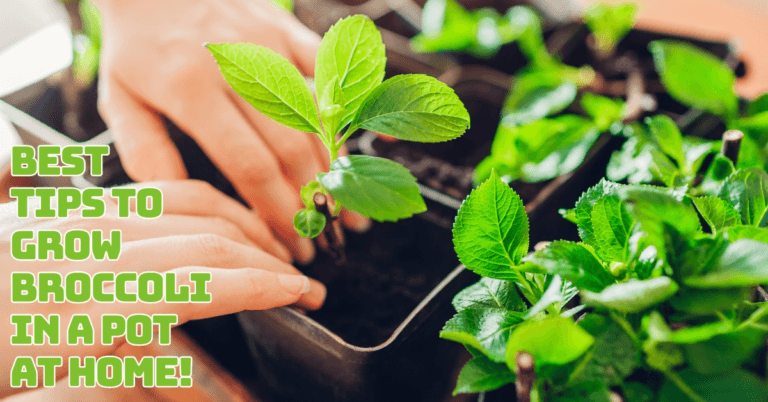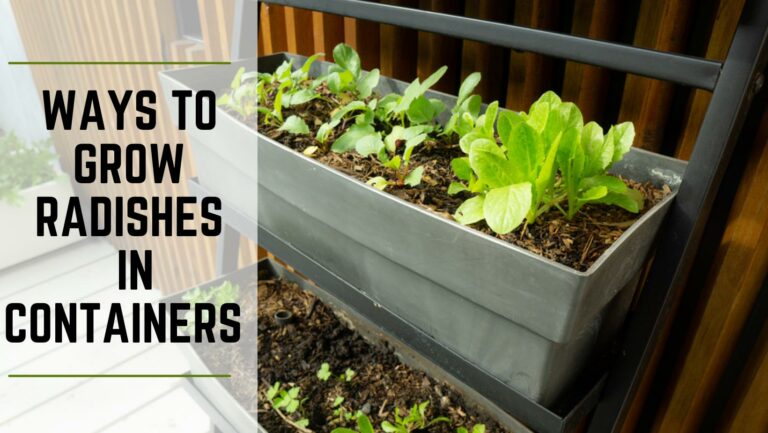Best Healthy Root Vegetables For Gardening
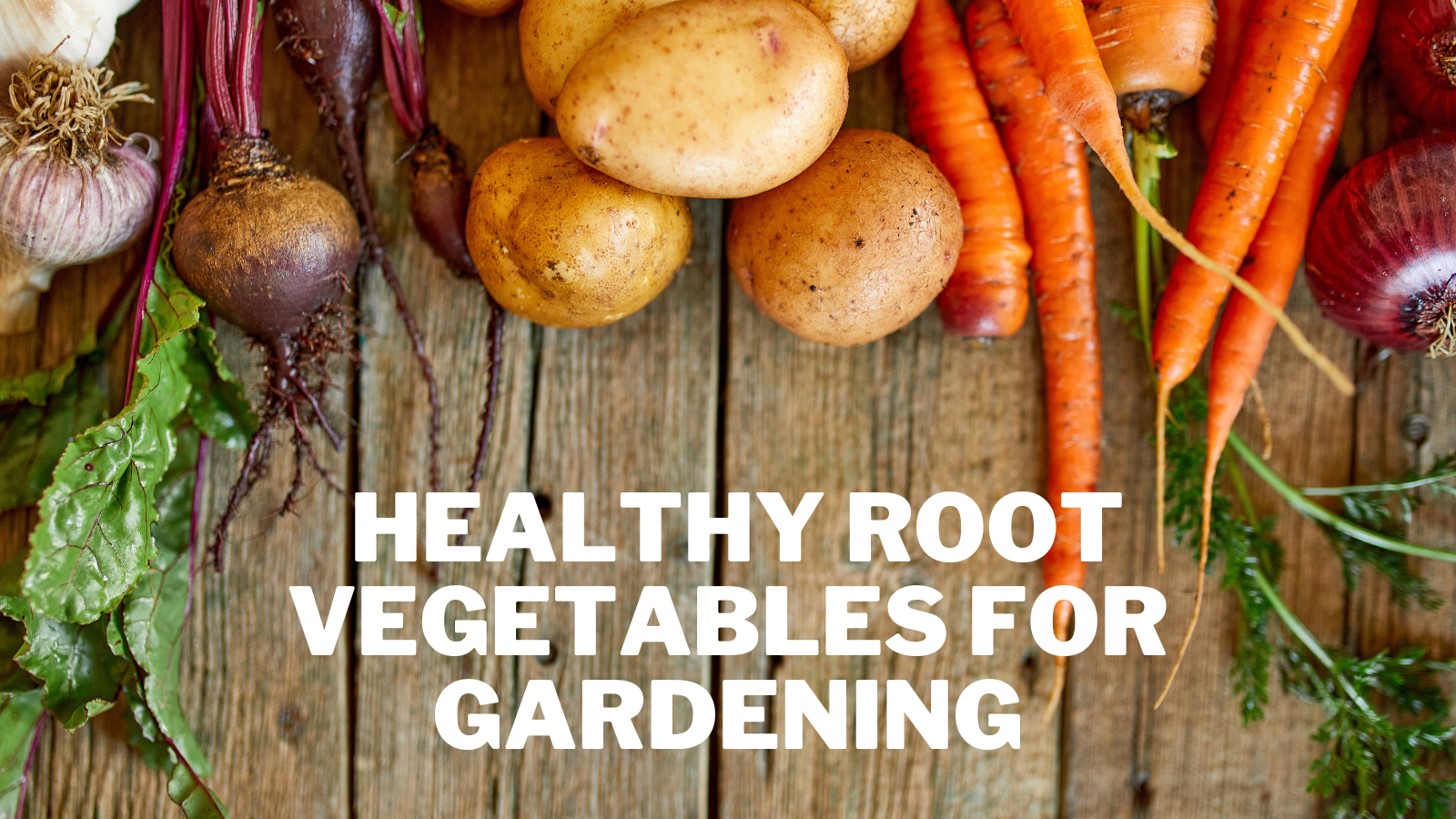
Healthy Root Vegetables For Gardening
One of the most popular veggies consumed worldwide is root vegetables. Although they were once a common ingredient in many South American and Asian dishes, they are now loved worldwide.
Although you've certainly had a few, this article will give you more information about the best root veggies.
Simply put, these are all underground-growing veggies like beets or carrots. Even though they are called root vegetables, you can also call them starchy veggies.
They occur in various forms, each with certain nutrients and unique health advantages.

What Are Root Vegetables?
The robust bulbs that swell and thrive beneath the soil are exactly what root vegetables are: the fruits of the earth.
Flashier plants and trees suspend networks of roots below the surface, utilizing this energy to absorb nutrients from the soil and develop upward and outward.
Vegetable roots operate a little differently. In contrast to fragrant herbs or eye-catching flower blossoms, which treasure their leaves, root vegetable prize—you got it—their tenacious roots.
Root vegetables are some of the heartiest meals in the fall since they absorb nutrients from the soil.
Additionally, digging up your root veggies to reveal full orange carrots or brilliant beets at harvest time is just as wonderful as unearthing hidden treasure.
Root vegetables typically have larger storage organs to store energy in the form of carbohydrates.
They differ in terms of starches, sugars, and other types of carbohydrates' concentration and balance.
Starchy root vegetables are important staple foods, especially in tropical areas. They outnumber cereals in much of Central Africa, West Africa, and Oceania, where they are used directly or mashed to make foods like fufu or poi.
Foods with a high starch content are particularly important economically. In root cellars, many root vegetables persist for several months.
This is one method of preserving food for use long after harvest, which is crucial in nontropical latitudes where harvesting is typically minimal or nonexistent throughout the winter.
Additionally, there are season extension techniques that, mostly through polytunnels, can extend the harvest throughout the winter.
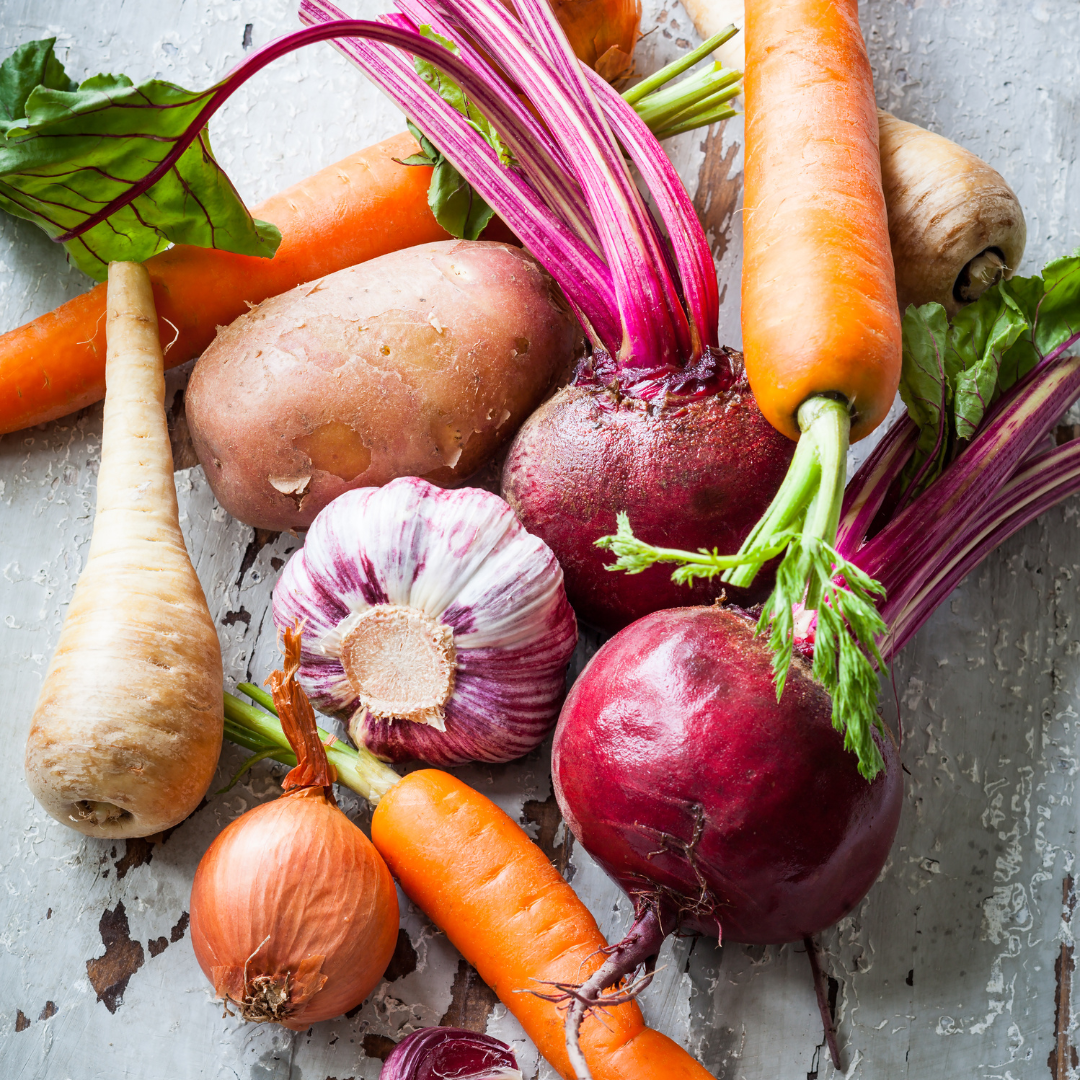
Health Benefits Of Root Vegetables
The advantages of a plant-based diet are essentially the only thing opposing factions in the contentious field of nutrition can agree on. And throughout the winter, root vegetables shine.
A significant ongoing European study discovered that those who consumed the most root vegetables had a 13% lower chance of developing diabetes than those who consumed the least. That comes as no shock.
They're a fantastic source of fibre-friendly, gut-friendly carbs, antioxidants, anti-inflammatory vitamins, minerals, and nutrients, all in the form we can best absorb food.
According to experts, healthy carbohydrates should account for 50% of our nutrient consumption.

1. Dietary Fibre
Typically, root vegetables are high in complex carbs. This includes dietary fiber, which supports improved digestive health and greater blood glucose stability. The majority of us could use more dietary fiber!
2. Resistant Starch
Additionally, many root vegetables have a lot of resistant starch. This kind of complex carbohydrate is one that the intestines have a hard time digesting.
It enters the colon intact and begins to ferment there, feeding the gut flora and generating healthy short-chain fatty acids.
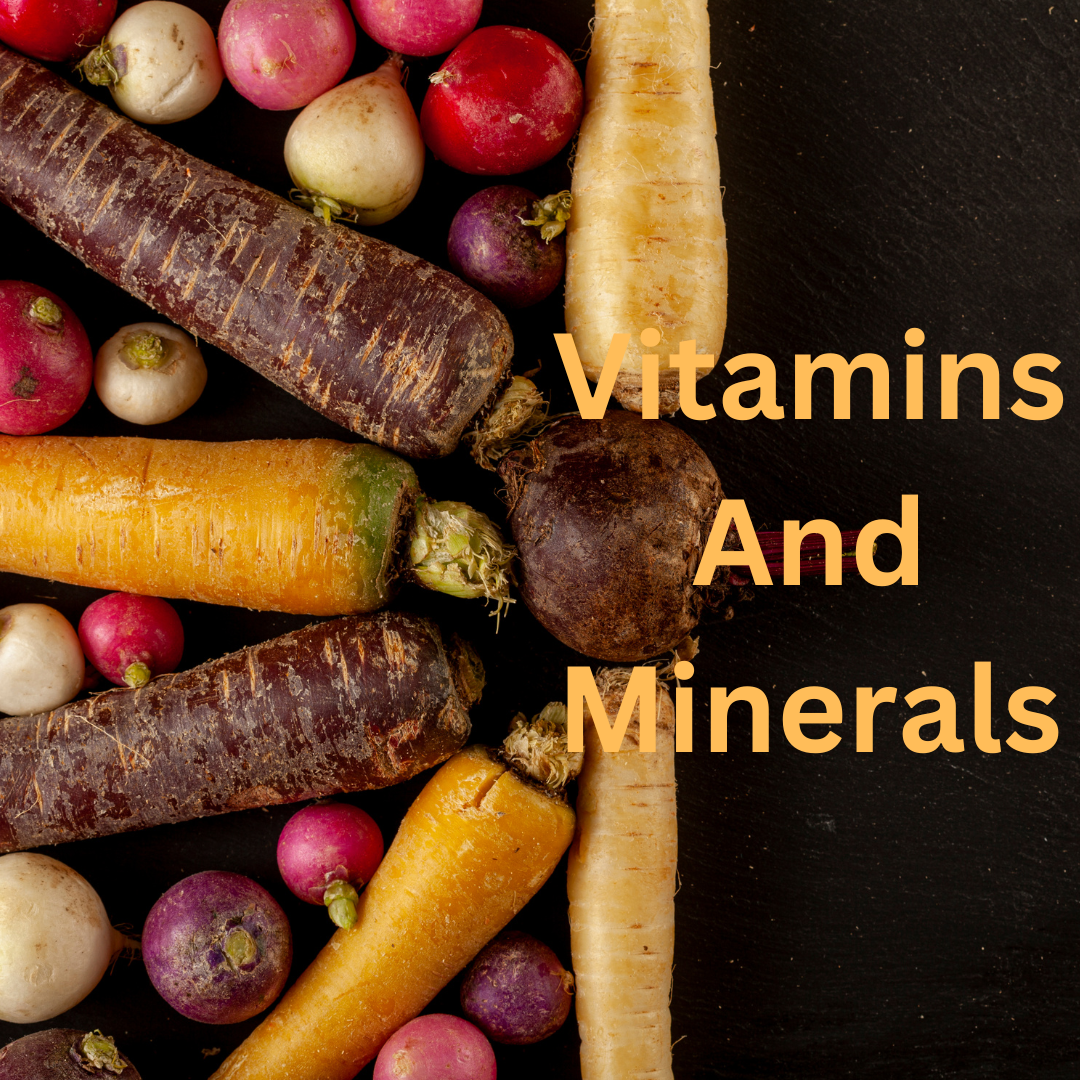
3. Vitamins And Minerals
Root vegetables are particularly rich in potassium, zinc, copper, phosphorus, and magnesium because of their direct interaction with the soil.
The mineral composition of the crops depends on the state of the soil in which they are grown. Hence, organic farming is still preferred.
Also, remember that root vegetables' high mineral content makes them excellent alkalizing foods.
You can determine how effectively you keep an ideal alkaline pH balance by measuring your pH.
Many roots are rich in vitamins A, C, and B6. Beet and radish roots, as well as other root vegetables that grow with edible greens, are excellent providers of vitamin K.
In other instances, root crops may serve as significant supplies of nutrients that are difficult to obtain elsewhere.
Consider the carrot as an example. You've heard that eating carrots can improve your vision since they contain a lot of beta-carotene, a precursor to vitamin A.
But did you know that carrots also contain molybdenum, a somewhat uncommon trace mineral?
Along with magnesium, this element supports the metabolism of fats and carbohydrates (important for bone health and many other processes).
Numerous vegetables with roots also contain antioxidants. Some foods, including onions, ginger, beets, and turmeric, are known to be anti-inflammatory.
Some, like garlic, have inherent antibacterial properties to help control gut bacterial overgrowth.
They are long known to have a modest hypoglycemia effect in people with diabetes and radishes.
The ability of ginger and turmeric to lessen inflammation has received substantial research.

Types Of Healthiest Root Vegetables
Root vegetables have been a mainstay of many South American and Asian diets for thousands of years.
Records indicate that some root vegetables, such as sweet potatoes, were a key component in folk medicine over 5,000 years ago. They have subsequently supported malnourished populations worldwide.
Root veggies, which are delicious and incredibly healthful, include foods like onion, radish, carrot, turnip, and sweet potato.
They fall within the category of edible underground plants. Each variety of root vegetables offers a unique collection of nutrients and health advantages.
Some of these root vegetables are only available at certain times. This article discusses the numerous types of root vegetables and the importance of including them in your diet.
1. Sweet Potatoes
The sweet potato is a sweet, starchy, savoury, and nutrient-rich root vegetable. They come in various shapes and hues, including white, orange, and purple.
Due to their rich vitamin content and several health advantages, they complement the diet.
A cup of cooked sweet potatoes contains 769 percent of the recommended daily intake of vitamin A, 65 percent of the recommended daily intake of vitamin C, and 50 percent of the recommended daily intake of manganese. Sweet potatoes are also high in fiber.
Additionally, sweet potatoes are a good source of fibre, copper, niacin, pantothenic acid, and antioxidants such as beta carotene, anthocyanins, chlorogenic acid, and anthocyanins.
Regular ingestion may aid digestion, combat cancer, fight dangerous free radicals, support healthy vision, and fight cancer.
It's pretty easy to include sweet potatoes in your diet. They can be boiled, baked, roasted, or steamed with or without skin.
Additionally, their inherent sweetness is a wonderful complement to both savoury and sweet recipes.
2. Turnips
Turnips are cruciferous vegetables, meaning they have many health advantages, such as kale, broccoli, collard greens, brussels sprouts, and cabbage.
They are rich in potassium, calcium, and magnesium, three minerals known to lower blood pressure, cholesterol, and triglycerides and support a healthy heart.
They are also rich in fiber, which supports digestive health, and vitamin C, which strengthens the immune system and enhances the skin's condition.
Like cruciferous vegetables, turnips contain indoles, phytonutrients that defend against cancer, particularly prostate, stomach, breast, lung, and colorectal cancers.
Turnips are frequently fried but can be eaten raw with dips or added to salads after peeling.
3. Beets
Beets are colourful red root vegetables rich in antioxidants, fiber, manganese, and folate.
Additionally, they are rich in nitrates, which encourage the blood vessels' inner lining to produce nitric oxide.
Nitric oxide can spontaneously relax and dilate the blood vessels, lowering blood pressure.
They are a wonderful supplement for anyone who has high blood pressure as a result.
However, use caution if you're already taking medicine because it could cause your blood pressure to drop too low.
Additionally, nitrates have increased exercise tolerance, extended time until exhaustion, and strengthened muscle contraction, all of which benefit athletes' performance and endurance.
Nitrates may also reduce inflammation and hasten muscle repair. Beets are a wonderful go-to food for a natural hemoglobin increase due to their high folate content.
They also provide a healthy quantity of iron and vitamin C, which help the body absorb iron.
Beets are fantastic in salads, juices, and as a soup garnish. They can also be roasted, blanched, steamed, or fermented for added probiotic advantages.
4. Radishes
These resilient, low-carb root veggies are nutrient-rich and may help you stave off some illnesses.
They contain a lot of vitamin C; a cup of raw radishes (116g) provides 29% of the daily needs.
They also include small levels of other minerals such as copper, manganese, selenium, zinc, folate, vitamin K, niacin, B2 and B6, calcium, iron, magnesium, potassium, sodium, and magnesium.
Radishes fight fungal infections like those brought on by Candida albicans, support overall digestive health, and may even help prevent cancer. The best way to eat them is raw; they can be added to salads or sandwiches.
5. Onions
Another popular root vegetable component of most cuisines is the onion. They are abundant in nutrients like vitamins, minerals, antioxidants, and other plant-based chemicals that demonstrate several health benefits, including preventing several diseases.
More than 25 flavonoid antioxidants, including quercetin and anthocyanins, have been linked to a reduced risk of heart disease and heart attacks, the prevention of problems from diabetes, and assistance in the fight against some cancers, which may find in onions.
Additionally, onions are abundant in sulphur-containing chemicals, which can slow the growth of tumours, particularly ovarian and lung cancer, inhibiting their spread.
Additionally, onions can improve bone density, lower blood sugar, and fight infections.
6. Garlic
Another popular root vegetable to add to your list is garlic. It shares a close relationship with onions, chives, leeks, and shallots, yet it differs slightly in terms of flavour and nutritional value.
It has been used in Nepal, the Middle East, and East Asia for many years to treat several ailments, such as dysentery, colic, intestinal worms, high blood pressure, diabetes, rheumatoid illness, and flatulence.
It has allium as an active component, which prevents cardiovascular illnesses, lowers blood sugar, controls blood pressure, lowers cholesterol, and fights parasitic, bacterial, fungal, and viral infections while boosting the immune system.
There are various ways to consume garlic. It can be taken as a supplement or added to raw or cooked food. Before adding cloves to your recipe, smash them for the greatest benefits.
7. Carrots
Carrots aid in heart protection. Beta carotene, a vitamin A, can be found in carrots.
According to studies, those who consume a lot of veggies, particularly carrots, have a lower risk of heart disease.
The American Heart Association (AHA) advises adults to drink at least two servings of vegetables daily to lower their risk of developing heart disease. Carrots lower the risk of cancer.
Several antioxidants in carrots, including vitamin C and beta carotene, aid in the battle against cancer cells.
The National Cancer Institute claims that consuming foods strong in antioxidants may lower the chance of developing some cancers, such as ovarian, lung, colorectal, and prostate cancer.
Carrots enhance vision. One gram of beta carotene, roughly 20% of the daily allowance for most healthy adults, can be found in one cup of diced carrots.
Vitamin A, which supports your immunological, inflammatory, and visual systems, is created in the body from beta-carotene.
It demonstrates that a high beta-carotene diet can prevent age-related macular degeneration (AMD), the most prevalent cause of vision loss.
8. Celery Root (Celeriac)
Celery root, also called celeriac, is distinct from the celery stalks you're likely to purchase from the grocery store.
They are different even if they come from the same family. While celery is produced for the stalks, celery root is intentionally grown for its root.
Celery root is less starchy than other root veggies but contains nutrients. It contains a lot of vitamin K; one cup can meet up to 80% of daily needs.
Consuming enough vitamin K is necessary for blood clotting and to support strong and healthy bones.
Additionally, it has beneficial amounts of fiber, antioxidants, phosphorus, potassium, and vitamins A, C, and B6.
Lutein, zeaxanthin, and beta-carotene are just a few of the antioxidants found in celery roots.
These antioxidants can aid in defending the body against the harm that free radicals can do to it, which can result in cancer and other illnesses.
Celery root has a lot of fiber as well. Fiber can enhance digestion and make you feel fuller for longer. Additionally, fiber reduces the risk of obesity, heart disease, and other illnesses.
Its high vitamin A and C content is necessary for the body to operate normally, including warding off diseases and boosting the immune system.
Lastly, celery is a great choice for anyone wanting to lower their blood pressure due to its high potassium content.
Potassium encourages salt excretion, which aids in maintaining a correct fluid balance and regulates blood pressure.
9. Horseradish
Horseradish is most well-known for its strong flavour and aroma. It is a long-used root vegetable with antibacterial and anti-cancer properties, among other medical uses. Nowadays, people frequently use it as a condiment.
Horseradish is healthy, lowering inflammation and enhancing general well-being. Numerous health issues, including arthritis, cancer, and heart disease, are brought on by inflammation.
An excellent source of vitamins A, C, and K is horseradish. These vitamins are necessary to keep nails, hair, and skin in good condition.
Horse radish also includes minerals like magnesium and potassium. These minerals aid in maintaining healthy nerves, blood pressure, and muscle function in the body.
Horseradish is also a strong source of antioxidants, aiding the battle against free radicals and supporting healthy cell growth.
Horseradish also demonstrates lower stress levels and enhanced mood and cognitive performance. This might aid in battling depression and reducing anxiety.
10. Rutabaga
A turnip-like root vegetable is rutabagas. It is related to turnips, cabbage, radish, cauliflower, and broccoli in its family.
Despite being a root vegetable frequently disregarded, rutabaga includes crucial elements for a balanced diet.
Vitamin C is one of the nutrients in rutabaga that is particularly significant. Vitamin C is necessary for cell growth and repair, which supports a robust immune system.
Additionally, rutabagas include potassium and magnesium, two nutrients crucial for preserving muscular health and reducing fatigue.
The fiber content of rutabagas is a surprise advantage. Fiber can also aid in lowering the risk of colon cancer.
You can eat it shredded into salads, soups, or vegetable casseroles. You can also purée it, boil it, roast it, mix it with sweet potatoes, or boil it.

Conclusion
Any vegetable that grows underground is referred to as a root vegetable. The finest ones to eat more frequently are sweet potatoes, carrots, celery root, onion, garlic, beets, turnips, rutabagas, horseradish, and radishes.
There are many others as well. They are nutrient-rich and may support healthy bones, fight inflammation, improve eye health, and avoid chronic diseases, among other things.
These veggies are simple to cook, incorporate into the diet, and have excellent and distinctive flavours. There are several tasty and healthy root vegetables, each with its health advantages.
Including one or two servings of root vegetables daily can greatly impact your health, from lowering oxidative stress to preventing chronic disease.
Combine these delightful root veggies with other nutrient-rich items to benefit your diet and health.
I trust you enjoyed this article on the Best Healthy Root Vegetables For Gardening. Please stay tuned for more blog posts to come shortly. Take care!
JeannetteZ
>>>Please click here to read my all-inclusive article about Container Gardening<<<
>>>Are you interested in homegrown herbs and medicine? Please click here to find out more about it!<<<
Your Opinion Is Important To Me
Thoughts? Ideas? Questions? I would love to hear from you. Please leave your questions, experiences, and remarks about the Best Healthy Root Vegetables For Gardening in the comments below. You can also reach me by email at Jeannette@Close-To-Nature.org.
Disclosure
This post may contain affiliate links. As an Amazon Associate and other affiliate programs, I earn from qualifying purchases at no extra cost to you. Please read my full affiliate disclosure.
You might also enjoy these blog posts:
Best Steps To Grow Chickpeas In Containers
Best Steps To Grow Crocuses In Containers
Best Steps To Grow Irises In Containers
Best Steps To Grow Primulas In Containers
Best Steps To Grow Heucheras In Containers





